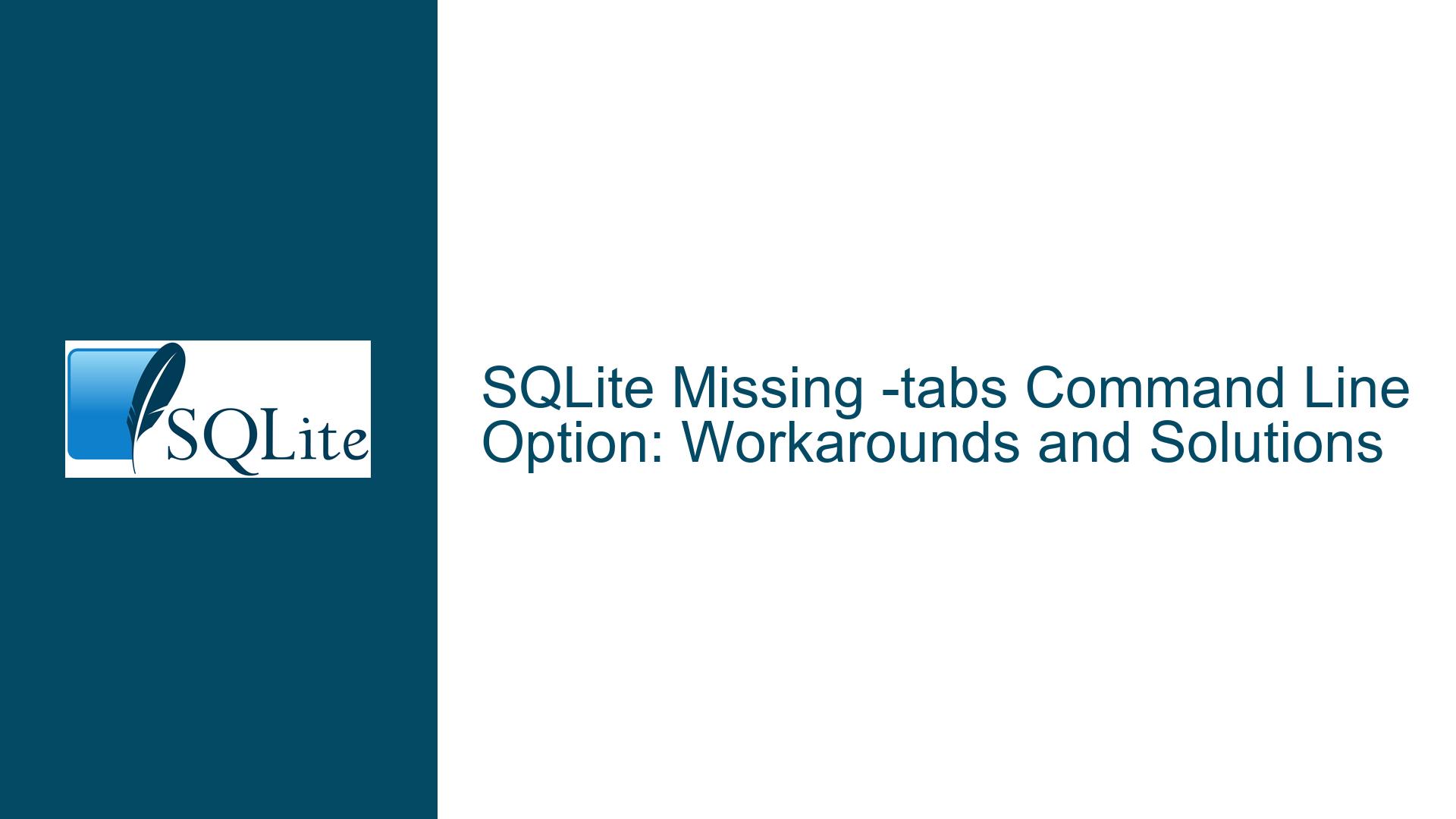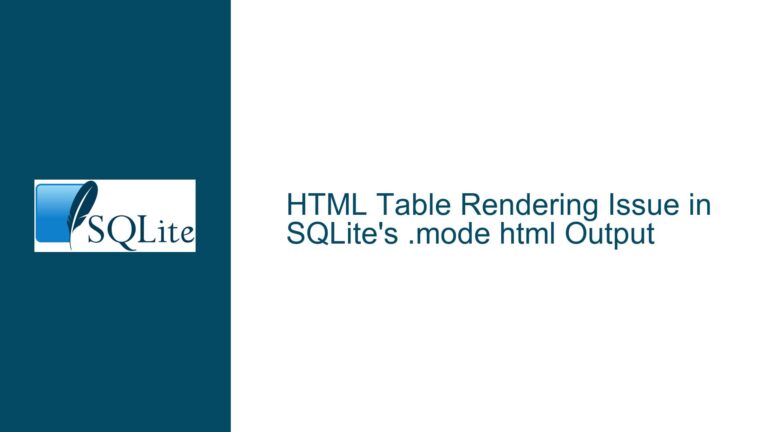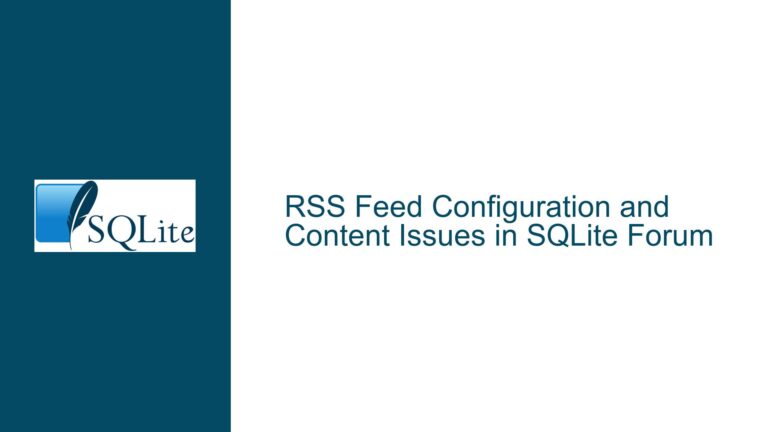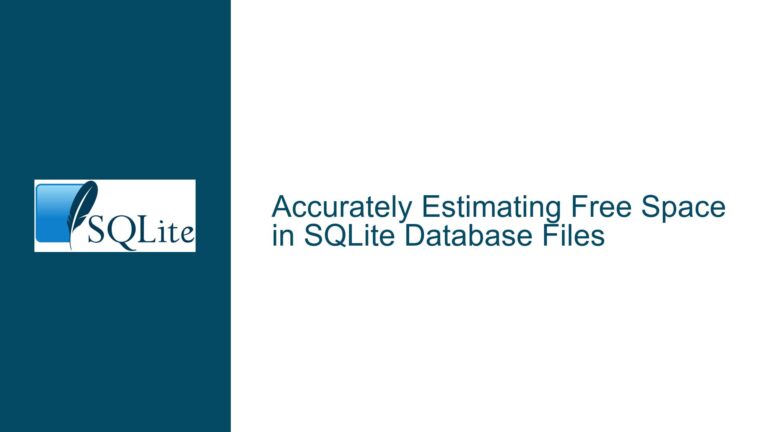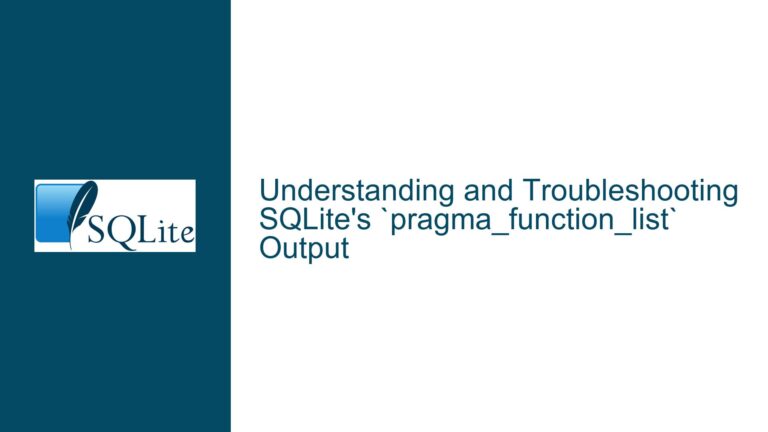SQLite Missing -tabs Command Line Option: Workarounds and Solutions
SQLite Command Line Interface Lacks -tabs Option
The SQLite command line interface (CLI) is a powerful tool for interacting with SQLite databases, offering a variety of output modes such as -box, -html, and -markdown. However, one notable omission is the -tabs option, which is available in the interactive mode but not as a direct command line argument. This absence forces users to employ workarounds to achieve tab-separated output, especially in non-interactive or scripted environments. The issue is particularly pronounced on Windows, where command line handling of special characters like the tab character (\t) can be cumbersome.
The -tabs mode is designed to output query results with columns separated by tab characters, which is useful for data export or integration with other tools that expect tab-delimited input. While the interactive mode supports .mode tabs, the lack of a corresponding -tabs command line option complicates one-off commands and scripting scenarios. This limitation has led to various workarounds, each with its own set of challenges and platform-specific considerations.
Command Line Handling of Special Characters and Platform-Specific Issues
The core of the issue lies in how different operating systems handle special characters like the tab character (\t) in command line arguments. On Unix-like systems, the shell can interpret \t as a tab character when preceded by a $ symbol, as in $'\t'. However, on Windows, the command line interpreter does not natively support this syntax, leading to the literal interpretation of \t as a string rather than a tab character. This discrepancy necessitates platform-specific workarounds, which can be error-prone and less intuitive for users.
For example, on Unix-like systems, the following command can be used to achieve tab-separated output:
sqlite3 -separator $'\t' mydb "select * from table1"
This command works because the shell interprets $'\t' as a tab character. However, on Windows, the same command would result in columns being separated by the literal string \t, which is not the desired outcome.
Another common workaround involves using the tr command to replace a different separator (such as the pipe character |) with a tab character:
sqlite3 mydb "select * from table1" | tr \| '\t'
While this approach works on Unix-like systems, it is not directly applicable on Windows due to differences in command line tools and shell capabilities.
Implementing -cmd for Non-Interactive Tab-Separated Output
One effective workaround for the missing -tabs option is the use of the -cmd flag in the SQLite CLI. The -cmd flag allows users to execute SQLite dot-commands before running the main query, enabling the configuration of output modes and separators directly from the command line. This approach is particularly useful for non-interactive or scripted use cases.
For example, the following command can be used to set the output mode to tabs before executing a query:
sqlite3 mydb -cmd ".mode tabs" "select * from table1"
This command works on both Unix-like systems and Windows, making it a more portable solution compared to platform-specific workarounds. The -cmd flag effectively bridges the gap between interactive and non-interactive use cases, allowing users to configure the SQLite CLI to their needs without requiring interactive input.
Another variation of this approach involves using shell redirection to pass the dot-command and query to the SQLite CLI:
echo ".mode tabs" | sqlite3 mydb "select * from table1"
This method achieves the same result as the -cmd flag but uses a different mechanism to configure the output mode. Both approaches are valid and can be used depending on the specific requirements of the task at hand.
The Case for Adding a -tabs Command Line Option
Despite the availability of workarounds, the absence of a -tabs command line option remains a notable limitation in the SQLite CLI. Adding this option would simplify the process of generating tab-separated output, particularly for users who frequently work with tab-delimited data. The implementation of such an option would be straightforward, as the underlying functionality already exists in the form of the .mode tabs dot-command.
A -tabs option would provide a more intuitive and consistent interface for users, reducing the need for platform-specific workarounds and improving the overall user experience. It would also align the SQLite CLI with other command line tools that offer direct support for tab-separated output, making it easier to integrate SQLite into existing workflows and scripts.
In conclusion, while the current workarounds provide a means to achieve tab-separated output in the SQLite CLI, the addition of a -tabs command line option would be a valuable enhancement. This change would streamline the process of generating tab-delimited data, improve cross-platform compatibility, and enhance the overall usability of the SQLite command line interface. Until such an option is implemented, users can rely on the -cmd flag and other workarounds to meet their needs.
